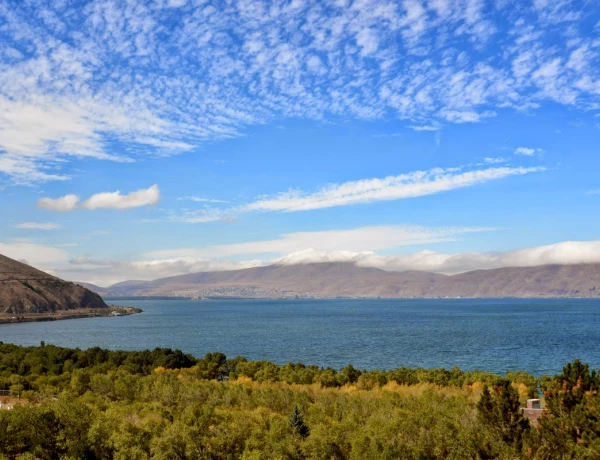Group Tours in Armenia
Thursday, 08 Jan, 2026
-
Lake Sevan, Sevanavank Monastery, Dilijan (short stop), Goshavank Monastery, Haghartsin Monastery
Duration: 9-10 hours
Start time: 10:00
Thursday, 08 Jan, 2026
Price per person
29.05 USD
group_tours.listing.number_of_seats.warning
-
Sightseeing and walking tour in Yerevan, Megerian Carpet factory-museum, Soviet Club
New & excitingDuration: 4-5 hours
Start time: 10:00
Thursday, 08 Jan, 2026
Price per person
21.05 USD
group_tours.listing.number_of_seats.warning
Friday, 09 Jan, 2026
-
Khor Virap Monastery, Birds-Cave, Hin Areni Wine factory, Noravank Monastery
Duration: 9-10 hours
Start time: 10:00
Friday, 09 Jan, 2026
Price per person
31.72 USD
group_tours.listing.number_of_seats.warning
-
Tsaghkadzor (Kecharis, Ropeway – one station), Lake Sevan (Sevanavank), Sevan trout barbecue treat
Duration: 7-8 hours
Start time: 10:00
Friday, 09 Jan, 2026
Price per person
31.72 USD
group_tours.listing.number_of_seats.warning
Saturday, 10 Jan, 2026
-
Garni Temple, Symphony of stones, Geghard Monastery, Lavash baking master class
Duration: 5-6 hours
Start time: 10:00
Saturday, 10 Jan, 2026
Price per person
26.39 USD
group_tours.listing.number_of_seats.warning
-
Lake Sevan, Sevanavank Monastery, Dilijan (short stop), Goshavank Monastery, Haghartsin Monastery
Duration: 9-10 hours
Start time: 10:00
Saturday, 10 Jan, 2026
Price per person
29.05 USD
group_tours.listing.number_of_seats.warning
Sunday, 11 Jan, 2026
-
Echmiadzin (Mother Cathedral, Hripsime, Gayane), Zvartnots
Duration: 4-5 hours
Start time: 10:00
Sunday, 11 Jan, 2026
Price per person
21.05 USD
group_tours.listing.number_of_seats.warning
-
Khor Virap Monastery, Birds-Cave, Hin Areni Wine factory, Noravank Monastery
Duration: 9-10 hours
Start time: 10:00
Sunday, 11 Jan, 2026
Price per person
31.72 USD
group_tours.listing.number_of_seats.warning
Monday, 12 Jan, 2026
-
Garni Temple, Symphony of stones, Geghard Monastery, Lavash baking master class
Duration: 5-6 hours
Start time: 10:00
Monday, 12 Jan, 2026
Price per person
26.39 USD
group_tours.listing.number_of_seats.warning
-
Tsaghkadzor (Kecharis, Ropeway – one station), Lake Sevan (Sevanavank), Sevan trout barbecue treat
Duration: 7-8 hours
Start time: 10:00
Monday, 12 Jan, 2026
Price per person
31.72 USD
group_tours.listing.number_of_seats.warning
Tuesday, 13 Jan, 2026
-
Khor Virap Monastery, Birds-Cave, Hin Areni Wine factory, Noravank Monastery
Duration: 9-10 hours
Start time: 10:00
Tuesday, 13 Jan, 2026
Price per person
31.72 USD
group_tours.listing.number_of_seats.warning
-
Lake Sevan, Sevanavank Monastery, Dilijan (short stop), Goshavank Monastery, Haghartsin Monastery
Duration: 9-10 hours
Start time: 10:00
Tuesday, 13 Jan, 2026
Price per person
29.05 USD
group_tours.listing.number_of_seats.warning
Wednesday, 14 Jan, 2026
-
Hovhannavank, Saghmosavank, Karmravor, Gourmet Dourme Chocolate House, Aghtsk Mausoleum
Brand-new itineraryDuration: 5-6 hours
Start time: 10:00
Wednesday, 14 Jan, 2026
Price per person
23.72 USD
group_tours.listing.number_of_seats.warning
-
Khor Virap Monastery, Azat Reservoir, Garni Temple, Lavash baking master class, Geghard Monastery
Duration: 8-9 hours
Start time: 10:00
Wednesday, 14 Jan, 2026
Price per person
31.72 USD
group_tours.listing.number_of_seats.warning
Thursday, 15 Jan, 2026
-
Lake Sevan, Sevanavank Monastery, Dilijan (short stop), Goshavank Monastery, Haghartsin Monastery
Duration: 9-10 hours
Start time: 10:00
Thursday, 15 Jan, 2026
Price per person
29.05 USD
group_tours.listing.number_of_seats.warning
Friday, 16 Jan, 2026
-
Khor Virap Monastery, Birds-Cave, Hin Areni Wine factory, Noravank Monastery
Duration: 9-10 hours
Start time: 10:00
Friday, 16 Jan, 2026
Price per person
31.72 USD
group_tours.listing.number_of_seats.warning
-
Tsaghkadzor (Kecharis, Ropeway – one station), Lake Sevan (Sevanavank), Sevan trout barbecue treat
Duration: 7-8 hours
Start time: 10:00
Friday, 16 Jan, 2026
Price per person
31.72 USD
group_tours.listing.number_of_seats.warning
Saturday, 17 Jan, 2026
-
Garni Temple, Symphony of stones, Geghard Monastery, Lavash baking master class
Duration: 5-6 hours
Start time: 10:00
Saturday, 17 Jan, 2026
Price per person
26.39 USD
group_tours.listing.number_of_seats.warning
-
Lake Sevan, Sevanavank Monastery, Dilijan (short stop), Goshavank Monastery, Haghartsin Monastery
Duration: 9-10 hours
Start time: 10:00
Saturday, 17 Jan, 2026
Price per person
29.05 USD
group_tours.listing.number_of_seats.warning
Sunday, 18 Jan, 2026
-
Echmiadzin (Mother Cathedral, Hripsime, Gayane), Zvartnots
Duration: 4-5 hours
Start time: 10:00
Sunday, 18 Jan, 2026
Price per person
21.05 USD
group_tours.listing.number_of_seats.warning
-
Khor Virap Monastery, Birds-Cave, Hin Areni Wine factory, Noravank Monastery
Duration: 9-10 hours
Start time: 10:00
Sunday, 18 Jan, 2026
Price per person
31.72 USD
group_tours.listing.number_of_seats.warning
Monday, 19 Jan, 2026
-
Garni Temple, Symphony of stones, Geghard Monastery, Lavash baking master class
Duration: 5-6 hours
Start time: 10:00
Monday, 19 Jan, 2026
Price per person
26.39 USD
group_tours.listing.number_of_seats.warning
-
Tsaghkadzor (Kecharis, Ropeway – one station), Lake Sevan (Sevanavank), Sevan trout barbecue treat
Duration: 7-8 hours
Start time: 10:00
Monday, 19 Jan, 2026
Price per person
31.72 USD
group_tours.listing.number_of_seats.warning
Tuesday, 20 Jan, 2026
-
Khor Virap Monastery, Birds-Cave, Hin Areni Wine factory, Noravank Monastery
Duration: 9-10 hours
Start time: 10:00
Tuesday, 20 Jan, 2026
Price per person
31.72 USD
group_tours.listing.number_of_seats.warning
With flexible itineraries and diverse routes, our group tours in Armenia cover both famous city sights and hidden gems off the beaten path. If you plan to stay in Yerevan for a long time, we also recommend considering apartment rental to enjoy comfort and coziness during your stay. Each tour is carefully planned to ensure a comfortable and enriching travel experience for every guest. Explore ancient landmarks, taste local cuisine, and enjoy the welcoming spirit of Armenia on your next adventure!


































































































































































































































































































